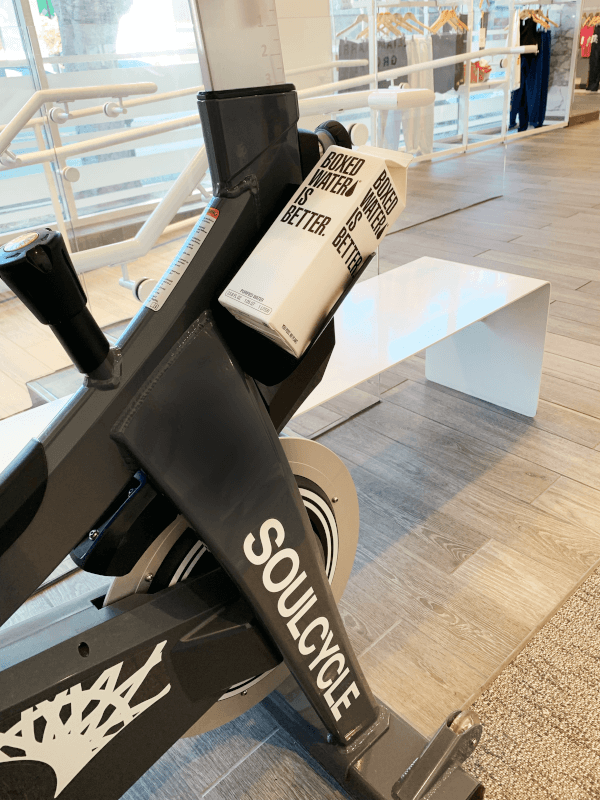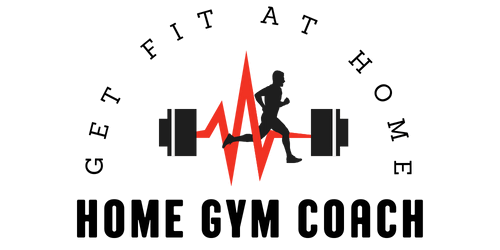Have you ever wondered what type of workout plan would be best suited for your fitness level? Look no further! In this article, we will take a closer look at the most popular types of custom workout plans designed specifically for different fitness levels. Whether you’re a beginner, intermediate, or advanced athlete, we’ve got you covered. So, get ready to discover the perfect workout plan that will help you achieve your fitness goals while having fun along the way. Let’s get started!
Beginner Fitness Levels
Full Body Workouts
For those just starting their fitness journey, full body workouts are a great way to get your body moving and build a solid foundation. These workouts target all major muscle groups, ensuring that you get a balanced workout and help prevent muscle imbalances. Full body workouts typically include exercises such as squats, lunges, push-ups, and planks. These exercises are easy to learn and require little to no equipment, making them perfect for beginners.
Circuit Training
Circuit training is another excellent option for beginners as it combines cardiovascular exercises with strength training. This type of workout involves moving through a series of different exercises with minimal rest in between. By constantly keeping your heart rate up, circuit training helps improve cardiovascular endurance and burns a significant amount of calories. It also helps build strength and muscle tone due to the inclusion of various resistance exercises.
Bodyweight Exercises
Bodyweight exercises are an ideal choice for beginners who may not have access to a gym or equipment. These exercises use your own body weight as resistance and can be performed anywhere, making them convenient and accessible. Some popular bodyweight exercises include squats, push-ups, planks, and lunges. They strengthen your muscles, increase flexibility, and improve overall fitness levels.
Interval Training
Interval training involves alternating between periods of high-intensity exercise and short periods of rest or low-intensity exercise. This type of workout is highly effective for beginners as it helps improve cardiovascular fitness and burn calories in a shorter amount of time. Interval training can be done with various exercises such as running, cycling, or even bodyweight exercises. It is a great way to challenge yourself and build endurance.
Intermediate Fitness Levels
Split Workouts
As you progress to the intermediate level, split workouts become more popular. These workouts involve dividing your training sessions to target different muscle groups on different days. For example, you might dedicate one day to upper body exercises and another day to lower body exercises. Split workouts allow you to focus on specific muscle groups more intensely, helping to build strength and muscle definition.
Strength Training
Strength training becomes more crucial as you advance in your fitness journey. This type of workout focuses on lifting heavy weights or using resistance to build muscle strength and size. Exercises such as deadlifts, squats, bench presses, and shoulder presses are commonly included in strength training routines. It is recommended to gradually increase the weight and intensity of your workouts to continue challenging your muscles.
HIIT Workouts
High-Intensity Interval Training (HIIT) is a popular choice for intermediate fitness levels. HIIT workouts involve short bursts of intense exercise followed by short rest periods. This type of training not only helps improve cardiovascular fitness but also enhances fat burning and boosts metabolism. HIIT workouts can be done with various exercises such as sprints, kettlebell swings, and burpees, providing a challenging and efficient workout.
Cardiovascular Endurance Workouts
Improving cardiovascular endurance is a key focus at the intermediate level. These workouts include activities that elevate your heart rate and promote stamina, such as running, cycling, or swimming. The duration and intensity of these workouts will gradually increase over time to build endurance. Incorporating both steady-state cardio and interval training into your routine will provide a well-rounded cardiovascular endurance workout.

Advanced Fitness Levels
Supersets and Dropsets
Supersets and dropsets are advanced training techniques that are perfect for those seeking to push their limits. Superset involves performing two exercises back-to-back without resting in between. This method not only increases the intensity of the workout but also saves time. Dropsets, on the other hand, involve performing an exercise with a heavy weight until failure, then quickly reducing the weight and continuing the exercise. These techniques challenge the muscles to failure, promoting muscle growth and increased strength.
Powerlifting Programs
Powerlifting programs are specifically designed to focus on three main lifts: squat, bench press, and deadlift. These programs are geared towards individuals who have a solid foundation in strength training and are looking to improve their lifting capabilities. Powerlifting workouts involve heavy weights and low repetitions, aiming to increase maximum strength. They often follow a structured program with specific sets and rest periods to optimize progress.
CrossFit Workouts
For those seeking a high-intensity and diverse workout experience, CrossFit is an excellent option. CrossFit combines elements of strength training, cardio, and functional movements to create a challenging and constantly varied workout. CrossFit workouts are typically performed in a group setting and include exercises such as Olympic lifts, kettlebell swings, box jumps, and rope climbs. The focus on intensity, competition, and community makes CrossFit workouts popular among advanced fitness enthusiasts.
Sport-Specific Training
Advanced fitness levels often involve training for specific sports or activities. Sport-specific training aims to improve athletic performance and optimize skills required for a particular sport. This type of training includes exercises and drills that mimic movements and demands of the sport, such as agility drills for soccer players or explosive jumps for basketball players. Sport-specific training helps athletes refine their skills, increase power, and reduce the risk of injuries while performing in their chosen activity.
Custom Workout Plans for Weight Loss
High-Intensity Interval Training (HIIT)
When it comes to weight loss, High-Intensity Interval Training (HIIT) is highly effective. HIIT involves short bursts of intense exercise followed by short rest periods. This type of training helps burn calories, increase metabolism, and improve cardiovascular fitness. HIIT workouts can be tailored to your fitness level, incorporating exercises such as sprints, mountain climbers, or jumping jacks. Including HIIT sessions in your workout plan can help accelerate weight loss and boost overall fitness.
Circuit Training
Circuit training is another excellent option for weight loss as it combines cardiovascular exercises with strength training. The continuous movement from one exercise to another keeps your heart rate elevated, promoting calorie burn. Circuit training can be customized to include a variety of exercises that target different muscle groups. By incorporating exercises such as squats, lunges, push-ups, and burpees, you can effectively burn fat and build lean muscle.
Cardiovascular Exercises
Including cardiovascular exercises in your workout plan is essential for weight loss. Running, cycling, swimming, and rowing are all excellent choices to increase calorie burn and improve cardiovascular endurance. These exercises can be incorporated into your routine in various forms, such as steady-state cardio or interval training. Aim for at least 150 minutes of moderate-intensity cardio or 75 minutes of vigorous-intensity cardio each week to achieve optimal weight loss results.
Strength Training
While cardiovascular exercises are crucial for weight loss, strength training should not be overlooked. Building lean muscle mass through strength training helps increase your metabolism and burn calories even at rest. Including compound exercises such as squats, deadlifts, and bench presses in your workout plan will help activate multiple muscle groups and promote fat loss. Aim to include strength training sessions at least two to three times a week to maximize weight loss results.

Custom Workout Plans for Muscle Gain
Progressive Overload Training
Progressive overload training is essential for muscle gain. This training method involves gradually increasing the weight, reps, or sets of your exercises over time to continually challenge your muscles. By consistently pushing your muscles beyond their comfort zone, you stimulate muscle growth and strength. Incorporate exercises such as squats, bench presses, and shoulder presses and gradually increase the weight and intensity as you progress.
Compound Exercises
Compound exercises are fundamental for muscle gain as they involve multiple muscle groups and joints. These exercises, such as squats, deadlifts, and pull-ups, engage large amounts of muscle mass, leading to increased muscle growth. Including compound exercises in your workout plan helps build overall strength, improve coordination, and boost muscle definition. Aim to include compound exercises in each muscle group to maximize muscle gain.
Isolation Exercises
Isolation exercises complement compound exercises by targeting specific muscles. These exercises focus on a single muscle group and allow you to achieve greater muscle definition and symmetry. Isolation exercises such as bicep curls, tricep extensions, and leg extensions help to isolate and strengthen specific muscles. Incorporating these exercises into your workout plan will help enhance muscle tone and overall aesthetics.
Volume Training
Volume training involves performing a high number of sets and repetitions for each exercise. This type of training puts a greater demand on the muscles and helps stimulate muscle hypertrophy. By increasing the overall training volume, you encourage muscle growth and strength gains. Incorporate exercises targeting different muscle groups and perform multiple sets of each exercise with moderate to heavy weights. Volume training challenges your muscles and promotes muscle gain.
Custom Workout Plans for Toning and Definition
Supersets and Giant Sets
Supersets and giant sets are excellent for toning and defining muscles. Supersets involve performing two exercises back-to-back with little to no rest in between. Giant sets take this concept further by incorporating three or more exercises. Both methods increase the intensity of the workout and provide a continuous challenge for the muscles. Incorporating these techniques into your workout plan allows you to target specific muscle groups and promote muscle definition.
Isometric Exercises
Isometric exercises involve holding a contraction without changing the length of the muscle. These exercises are excellent for toning and strengthening the muscles without adding bulk. Isometric exercises, such as planks, wall sits, and static lunges, engage and work the muscles intensely, improving muscle endurance and promoting a lean physique. Including isometric exercises in your workout plan will help you achieve the sculpted and defined look you desire.
Functional Training
Functional training focuses on exercises that mimic movements performed in daily activities or sports. These exercises target multiple muscle groups and enhance overall muscular strength and flexibility. Functional training exercises, such as kettlebell swings, medicine ball throws, and TRX exercises, improve muscular endurance, stability, and coordination. Incorporating functional training into your workout plan will not only help tone and define your muscles but also improve your physical performance in daily life or specific sports.
Plyometric Exercises
Plyometric exercises, also known as jump training, are highly effective for toning and defining muscles. These exercises involve quick and explosive movements that engage the muscles and increase power. Plyometric exercises, such as box jumps, jump squats, and burpees, activate fast-twitch muscle fibers and improve muscular strength, speed, and agility. Including plyometric exercises in your workout plan will help you achieve a more sculpted and athletic physique.

Custom Workout Plans for Endurance
Long-Distance Running
Long-distance running is a popular choice for building endurance. This type of training involves running for extended periods at a steady pace. It helps improve cardiovascular fitness, increase lung capacity, and enhance overall endurance. Gradually increase your running distance and duration over time to challenge yourself and build resilience. Incorporate long-distance running into your workout plan at least once or twice a week to improve your endurance.
Cycling
Cycling is another excellent option for improving endurance. Whether you prefer outdoor cycling or using a stationary bike, this activity engages multiple muscle groups and provides a low-impact cardiovascular workout. Cycling helps enhance cardiovascular fitness, strengthen lower body muscles, and improve stamina. Including cycling sessions in your workout plan two to three times a week will help you build endurance and improve your overall fitness level.
Swimming
Swimming is a fantastic full-body workout that builds endurance and promotes cardiovascular health. It is a low-impact activity that is easy on the joints, making it suitable for individuals with injuries or joint pain. Swimming not only helps improve cardiovascular fitness but also strengthens muscles in the upper and lower body. Include swimming sessions in your workout plan to challenge your endurance and improve overall cardiovascular health.
Rowing
Rowing is an excellent full-body workout that targets major muscle groups and improves cardiovascular endurance. Whether you use a rowing machine or participate in outdoor rowing, this activity engages both upper and lower body muscles, providing an intense and efficient workout. Rowing helps build strength, improve posture, and increase cardiovascular fitness. Incorporate rowing into your workout plan to challenge your endurance and build overall strength.
Custom Workout Plans for Flexibility
Yoga
Yoga is a fantastic practice for improving flexibility and promoting overall well-being. It involves a series of poses and stretches that help increase muscle flexibility, joint range of motion, and improve posture. Yoga also incorporates deep breathing and relaxation techniques, providing mental benefits such as stress reduction and improved focus. Including regular yoga sessions in your workout plan will help enhance flexibility, balance, and overall mind-body connection.
Pilates
Pilates is another excellent option for improving flexibility, core strength, and alignment. This practice focuses on controlled movements and emphasizes proper alignment and breathing. Pilates exercises target deep core muscles and promote flexibility in the muscles and joints. Incorporating pilates exercises into your workout plan will help you lengthen and strengthen your muscles, improve posture, and enhance overall flexibility.
Stretching Exercises
Dedicated stretching exercises are essential for improving flexibility. Stretching helps lengthen muscles, increase joint range of motion, and prevent injuries. Incorporate dynamic stretching exercises at the beginning of your workout to warm up your muscles and static stretching exercises at the end to cool down and improve flexibility. Including stretches for major muscle groups in your workout plan will help you maintain and improve your flexibility.
Mobility Training
Mobility training focuses on improving joint mobility and range of motion. This type of training involves exercises that target specific joints and help improve their flexibility and movement. Mobility training often includes exercises such as joint rotations, lunges, and hip circles. Incorporate mobility exercises into your workout plan to enhance overall flexibility, joint health, and movement quality.

Custom Workout Plans for Strength
Powerlifting Programs
Powerlifting programs are specifically designed to focus on strength gains and optimize performance in the three main lifts: squat, bench press, and deadlift. These programs often involve heavy weights and lower repetitions to build maximum strength. Powerlifting workouts follow a structured program with specific sets, reps, and rest periods. Including powerlifting exercises in your workout plan will help you increase overall strength, muscle mass, and power output.
Compound Exercises
Compound exercises are crucial for building strength as they engage multiple muscle groups and joints. These exercises, such as squats, deadlifts, and overhead presses, help improve overall strength, increase muscle mass, and enhance functional movements. Incorporating compound exercises into your workout plan allows you to lift heavy weights and target multiple muscle groups, promoting strength gains.
Isometric Strength Training
Isometric strength training involves holding a contraction without changing the length of the muscle. This type of training improves muscular strength and endurance without the need for additional equipment or weights. Isometric exercises such as planks, wall sits, and static hold exercises engage and challenge the muscles, leading to increased strength. Incorporate isometric exercises into your workout plan to build strength and increase muscle tone.
Olympic Weightlifting
Olympic weightlifting focuses on two main lifts: the snatch and the clean and jerk. These lifts require explosive power, strength, and precise technique. Olympic weightlifting workouts involve performing these lifts with maximal effort and incorporating accessory exercises to target specific muscle groups. Including Olympic weightlifting exercises in your workout plan will help you build overall strength, power, and athleticism.
Custom Workout Plans for Rehabilitation
Low-Impact Cardiovascular Exercises
If you are recovering from an injury or have joint pain, low-impact cardiovascular exercises are a great option. These exercises minimize stress on the joints while still providing a cardiovascular workout. Low-impact exercises include swimming, biking, using an elliptical machine, or walking on a treadmill. Incorporating low-impact cardiovascular exercises into your workout plan helps promote blood flow, cardiovascular endurance, and overall recovery.
Physical Therapy Exercises
Physical therapy exercises are designed to aid in the recovery and rehabilitation process after an injury. These exercises are specifically tailored to target and strengthen affected areas or muscle groups. Depending on the type and severity of your injury, physical therapy exercises can range from simple stretches to more complex strength-building exercises. Incorporate the exercises prescribed by your physical therapist into your workout plan to aid in your recovery and strengthen affected muscles.
Mobility and Flexibility Workouts
Mobility and flexibility workouts are essential for rehabilitation as they help restore joint range of motion, improve flexibility, and prevent further injuries. These workouts often include stretches and exercises that target specific joints and muscles. Incorporating mobility and flexibility exercises into your workout plan will help improve overall mobility, reduce muscle imbalances, and aid in the rehabilitation process.
Stability and Balance Training
Stability and balance training exercises focus on improving and restoring balance, coordination, and stability. These exercises are beneficial for individuals recovering from injuries or those looking to prevent falls and improve overall stability. Stability and balance exercises can include exercises on unstable surfaces, such as foam pads or balance boards, as well as specific exercises that target core and lower body stability. Incorporate stability and balance exercises into your workout plan to aid in your recovery and improve overall stability.



